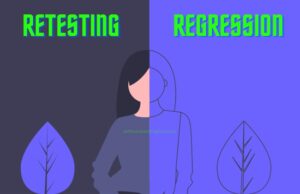The Importance of Regression Testing in Software Development – Definition, Benefits And Examples
Regression testing is an essential component of software development that ensures the quality of software products. It involves the retesting of software applications to detect defects or bugs that may have been introduced during changes or updates made to the software.

What is Regression Testing?
Regression testing is an essential process for software development teams to ensure that the software remains functional and performs as expected even after changes or updates are made. Regression testing is a vital process in software development for several reasons.
First and foremost, it helps detect defects that may have been introduced during the development process. These defects may be caused by changes in code, updates to libraries or frameworks, or integration with other systems. Without regression testing, these defects can go unnoticed and cause significant issues when the software is deployed in a live environment.
In addition, regression testing helps ensure that the software meets the desired level of quality. It ensures that the software behaves as expected, and all its features and functions work correctly. This is especially important for critical software applications such as medical devices, aerospace systems, and financial software, where even a small error can have significant consequences.
Another key benefit of regression testing is that it helps identify and prevent the introduction of new defects. By testing the software after every change or update, developers can detect and fix issues before they become critical. This reduces the overall cost of software development and ensures that the software is released on time.
Finally, regression testing helps build customer confidence in the software. When customers use software that has been thoroughly tested and is free from defects, they are more likely to trust the software and recommend it to others. This is particularly important in today’s highly competitive software market, where customer loyalty and trust are critical to success.
Examples of Regression testing
Suppose you are testing a web application that allows users to search for and book flights. You have already conducted initial testing on the application and have identified and reported several defects to the development team. After the team fixes the defects, you need to conduct regression testing to ensure that the fixes have not introduced any new issues or broken existing functionality.
Here are some examples of regression testing scenarios you could run:
- Booking a flight: You could test the entire booking process end-to-end, from searching for available flights to selecting a flight and entering personal information. This will help ensure that all the functionality related to booking a flight is still working as expected.
- User authentication: You could test the login process to make sure that users can still log in successfully after the fixes have been made. You could also test the password reset process to make sure that it still works as expected.
- Searching for a flight: You could test the search functionality to make sure that users can still find available flights and filter results based on different criteria.
- Payment processing: You could test the payment processing functionality to ensure that users can still enter their payment information and complete a booking successfully.
By conducting these tests, you can ensure that the application is still functioning correctly and that any changes made to the software have not introduced new defects or broken existing functionality.
Difference between Re-Testing and Regression Testing
Re-testing and regression testing are two types of software testing that are often used interchangeably but have different objectives and scope.
Re-testing involves testing a specific defect or issue that was identified during previous testing. The purpose of re-testing is to ensure that the defect has been fixed and that the software is now working as expected. Re-testing is typically performed on a smaller scale and focuses on a specific area of the software.
Regression testing, on the other hand, involves re-executing previously executed test cases to ensure that changes made to the software have not introduced new defects or broken existing functionality. Regression testing is typically performed on a larger scale and covers a broader area of the software.
The key differences between re-testing and regression testing are:
- Objective: The objective of re-testing is to verify that a specific defect has been fixed, while the objective of regression testing is to ensure that the software still works as expected after changes have been made.
- Scope: Re-testing is typically focused on a specific area of the software, while regression testing covers a broader area and involves re-executing previously executed test cases.
- Test Cases: In re-testing, only the test cases related to the specific defect or issue are executed, while in regression testing, all the previously executed test cases are executed.
- Timing: Re-testing is performed after a defect or issue has been fixed, while regression testing is performed after changes have been made to the software.
In summary, re-testing is a type of testing that verifies that a specific defect or issue has been fixed, while regression testing is a type of testing that ensures that the software still works as expected after changes have been made.
Conclusion
In conclusion, regression testing is a critical component of software development that ensures the quality of software products. By detecting defects, ensuring functionality, preventing new defects, and building customer confidence, regression testing helps developers deliver high-quality software that meets customer needs and expectations.
As such, it is essential for software development teams to prioritize regression testing to ensure the overall success of their software products.






